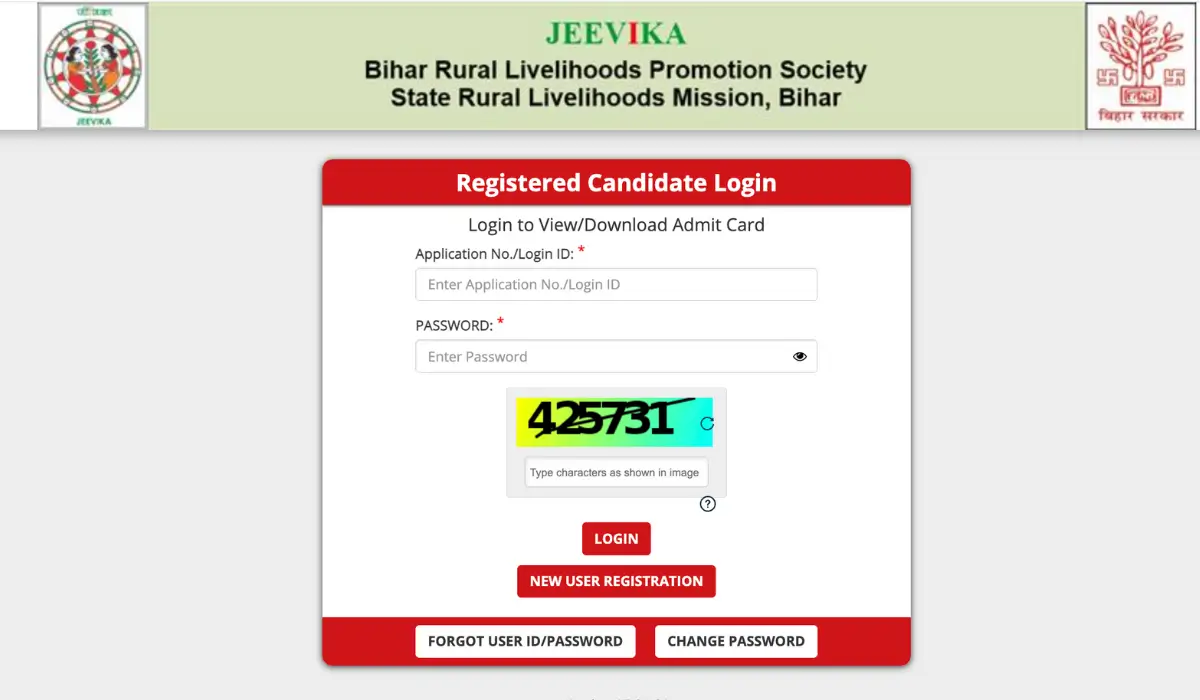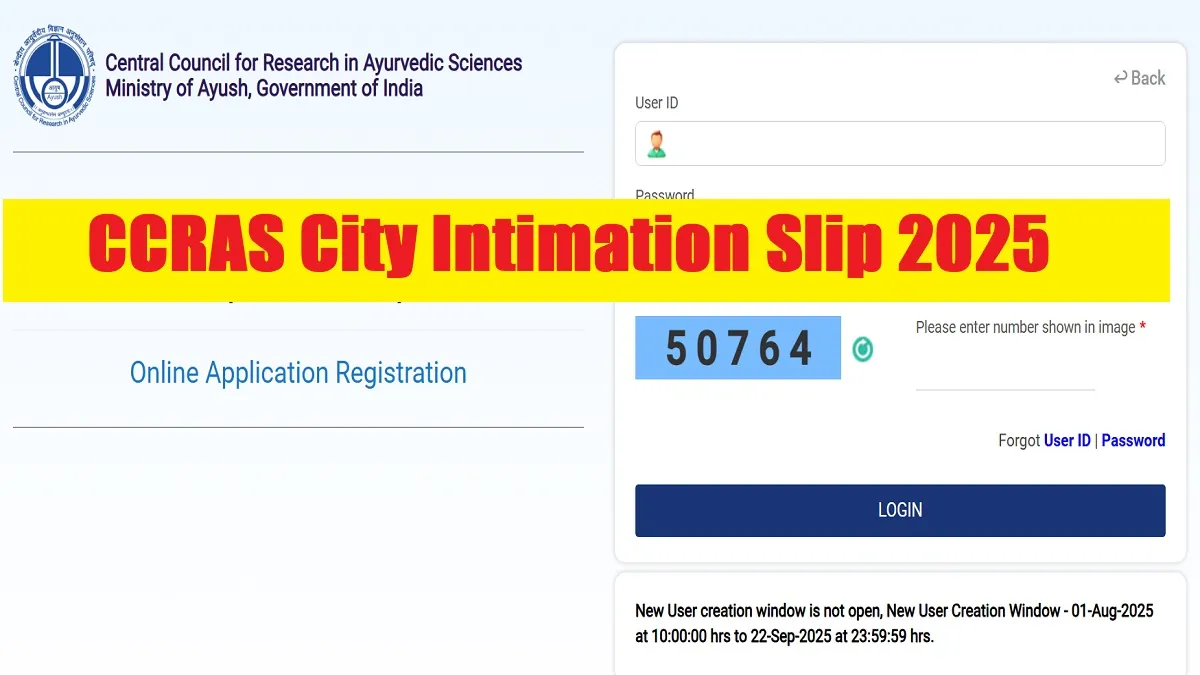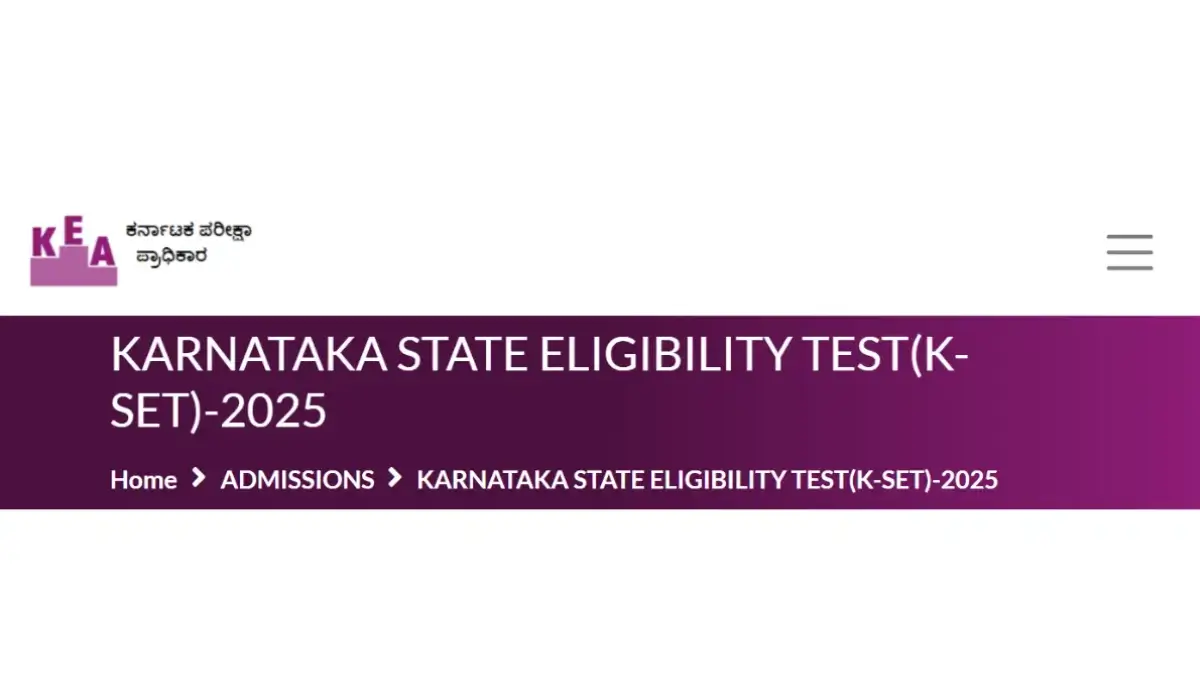UPI Biometric Authorization: Introduction
पिछले कुछ वर्षों में भारत के डिजिटल भुगतान पारिस्थितिकी तंत्र में अभूतपूर्व परिवर्तन आया है। नकद-आधारित लेनदेन से लेकर तत्काल ऑनलाइन भुगतान तक, एकीकृत भुगतान इंटरफ़ेस (UPI) भारत की डिजिटल अर्थव्यवस्था की रीढ़ बन गया है। अब, एक बड़ा नवाचार UPI को और भी तेज़, सुरक्षित और आसान बनाने के लिए तैयार है – फिंगरप्रिंट और फेस रिकग्निशन जैसे डिवाइस बायोमेट्रिक स्कैनर के माध्यम से UPI भुगतानों का प्राधिकरण।
यह नई सुविधा प्रत्येक लेनदेन के लिए मैन्युअल रूप से यूपीआई पिन दर्ज करने की आवश्यकता को समाप्त कर देगी, जिससे उपयोगकर्ता अपने मोबाइल की अंतर्निहित बायोमेट्रिक प्रणाली का उपयोग करके भुगतान को प्रमाणित कर सकेंगे।
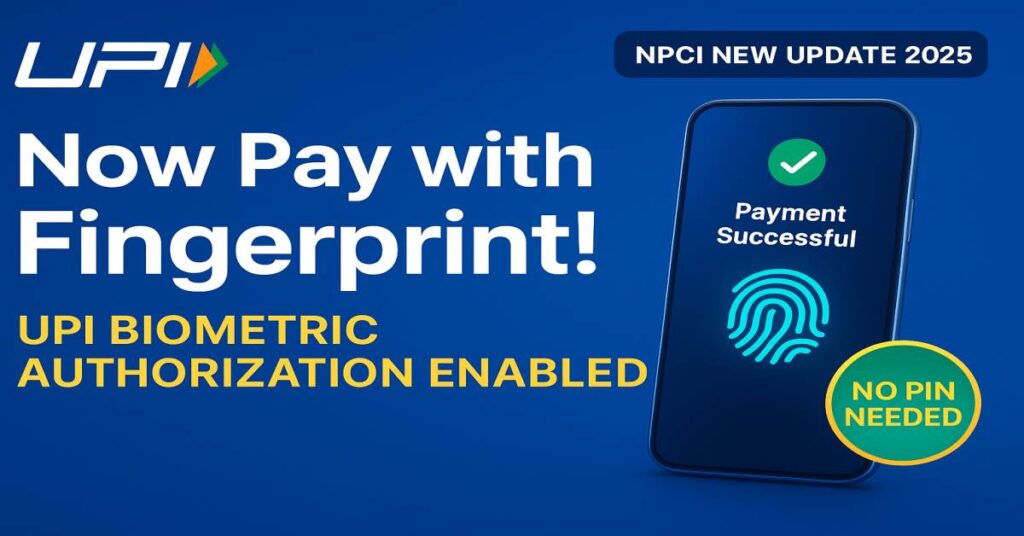
What Is UPI Biometric Authorization?
UPI Biometric Authorization NPCI द्वारा प्रस्तुत एक नई सुरक्षा सुविधा है जो यूपीआई लेनदेन को डिवाइस-स्तरीय बायोमेट्रिक प्रमाणीकरण – जैसे फिंगरप्रिंट या चेहरे की पहचान का उपयोग करके सत्यापित करने की अनुमति देती है।
हर बार यूपीआई पिन टाइप करने के बजाय, उपयोगकर्ता केवल अपने फिंगरप्रिंट को स्कैन करके या अपने फोन के फेस अनलॉक सिस्टम का उपयोग करके भुगतान पूरा कर सकते हैं।
बायोमेट्रिक डेटा किसी सर्वर पर संग्रहीत या प्रेषित नहीं किया जाता है – यह उपयोगकर्ता के डिवाइस पर ही रहता है, जिससे पूर्ण गोपनीयता और सुरक्षा सुनिश्चित होती है।
How Does UPI Biometric Authorization Work?
Here’s how this feature functions in real-world usage:
- Setup Biometric on Device:
Your smartphone must already have fingerprint or face unlock enabled. - Enable Feature in UPI App:
Go to your UPI app’s security settings and turn on “Use Biometric for UPI Authorization.” - Make a Payment:
- Scan a QR code or select a contact.
- Enter the amount.
- When prompted for the UPI PIN, select “Use Biometric.”
- Authenticate using your fingerprint or face.
- Payment Success:
Once verified, your payment is processed instantly without any PIN entry.
If biometric verification fails, you can always fall back to your regular UPI PIN method.
Benefits of UPI Biometric Authorization
- 1. Faster Transactions
- Payments happen in seconds without typing long PINs – ideal for daily users and small merchants.
- 2. Better Security
- Your fingerprint or face ID cannot be copied or stolen like a PIN. This drastically reduces the chances of unauthorized access or fraud.
- 3. User Convenience
- Users of all age groups can now make payments quickly, especially senior citizens or those uncomfortable with typing passwords.
- 4. Accessibility Boost
- People in rural areas or with limited literacy can make safe and easy digital payments using just their fingerprint.
- 5. Reduced PIN-Based Frauds
- No more risk of someone watching or recording your PIN. The biometric data is stored securely on your own device.
Security Features Of UPI Biometric Authorization
NPCI and UPI partner banks have implemented multiple layers of security:
- On-Device Verification:
Biometric data never leaves your phone. It’s verified within the secure chip or trusted hardware of the device. - User Control:
You can enable or disable biometric payments anytime in your UPI app settings. - Limited Transaction Amount:
Currently, the feature works for transactions up to ₹5,000. Higher-value payments will still require PIN verification. - Data Protection:
No bank, UPI app, or NPCI server stores or accesses your biometric information.
Challenges and Limitations Of UPI Biometric Authorization
While it’s a revolutionary step, there are a few practical limitations:
- Device Requirement:
Only smartphones with fingerprint or face scanners can use this feature. - Network or Hardware Failure:
Biometric sensors sometimes fail due to wet fingers or poor lighting. - Transaction Cap:
For safety, biometric authorization is limited to smaller transactions initially. - User Awareness:
Many users still don’t understand how biometric security works, which might slow down adoption.
How to Enable Biometric Payment in UPI Apps
Here’s a quick setup guide:
- Update Your UPI App — Make sure it’s the latest version.
- Open App Settings — Go to “Security” or “Payment Authorization.”
- Enable Biometric Authentication.
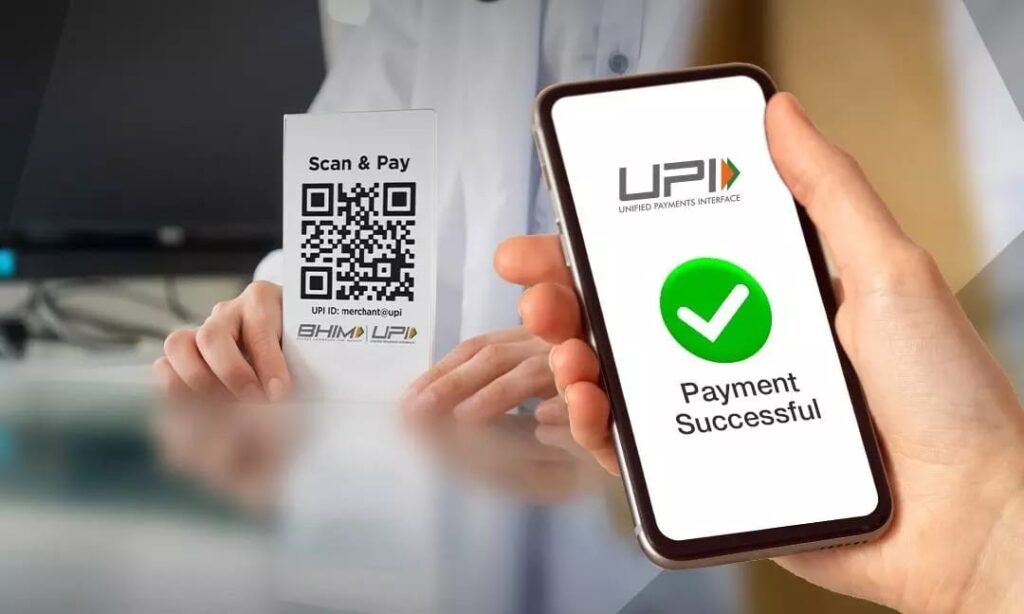
- Allow Permission — Grant access to fingerprint or face unlock.
- Verify with PIN — Confirm once using your UPI PIN.
- Done — Now you can use your biometric scanner to authorize payments.
Why This Update Matters for India
The UPI Biometric Authorization feature represents India’s leap into the future of fintech innovation.
- It simplifies the digital payment experience for millions.
- It promotes financial inclusion for users who find passwords complex.
- It makes UPI payments even more secure, accessible, and user-friendly.
As India’s UPI transactions continue to cross billions per month, biometric authorization ensures that the system remains robust and secure for the next generation of users.
Future of UPI Payments
NPCI has already confirmed that the biometric feature will soon expand to:
- Wearable devices and smart glasses
- Aadhaar-linked facial authentication for government and welfare payments
- Higher transaction limits after successful nationwide testing
With these improvements, India is set to become a global leader in biometric-based digital transactions.
UPI Biometric Authorization: Overview
| Topic | Details / Links |
|---|---|
| Scheme Name | UPI Biometric Authorization |
| Implemented By | National Payments Corporation of India (NPCI) |
| Feature Launch | October 2025 (Gradual Rollout) |
| Modes of Biometric | Fingerprint / Face Recognition |
| Transaction Limit | ₹5,000 (Initially) |
| Applicable Platforms | BHIM, Google Pay, PhonePe, Paytm, Amazon Pay & others |
| Official Website | Click Here |
| Security Type | On-Device Biometric Verification |
| Fallback Option | UPI PIN (if biometric fails) |
| Category | Digital Payment / Fintech / NPCI Update |
| Biharcult Official Website Link | Visit Now |
| Join Our Telegram Channel | Join Now |
FAQs — UPI Can Be Authorized with Device Biometric Scanner
Q1. What is biometric authentication in UPI payments?
Biometric authentication in UPI payments allows users to authorize transactions using their device’s built-in fingerprint or face scanner instead of entering a UPI PIN manually. It ensures a faster, safer, and more convenient payment experience.
Q2. Who announced the new biometric authorization feature for UPI?
The National Payments Corporation of India (NPCI) in partnership with the Reserve Bank of India (RBI) announced this new update to enhance the security layer in digital payments across India.
Q3. How will UPI biometric authorization work?
When users make a UPI payment, instead of entering a UPI PIN, they can approve the transaction using their smartphone’s biometric sensor — such as a fingerprint or facial recognition — to confirm identity and complete the payment securely.
Q4. Is biometric authorization mandatory for all UPI users?
No, biometric authorization is an optional feature. Users can choose between their traditional UPI PIN or biometric verification depending on the device capability and personal preference.
Q5. Which devices support UPI biometric authentication?
Devices equipped with built-in biometric scanners — such as Android smartphones with fingerprint sensors or iPhones with Face ID — will support this feature once enabled by the respective UPI apps.
Q6. Is biometric authorization safer than UPI PIN?
Yes, biometric authorization adds an extra layer of protection. Since fingerprints and facial data are unique to each user, it reduces the chances of fraud, unauthorized access, and password leaks.
Q7. Will my biometric data be stored by UPI or NPCI?
No. UPI and NPCI do not store users’ biometric data. The biometric verification process takes place locally on the user’s device through secure hardware, ensuring privacy and data protection.
Q8. Which UPI apps will support biometric payment authorization?
Popular UPI apps like Google Pay, PhonePe, Paytm, and BHIM are expected to roll out this feature gradually after integrating the NPCI-approved biometric authentication framework.
Q9. How can I activate biometric authorization for UPI payments?
Once available, users can enable the option through their UPI app settings under the “Security” or “Authentication” section, after granting permission to use the device’s biometric scanner.
Q10. What are the benefits of using biometric authorization in UPI?
The key benefits include faster transactions, enhanced security, convenience, elimination of PIN entry errors, and a seamless digital payment experience across supported devices.
Q11. When will the UPI biometric feature be available to the public?
The rollout will be gradual, starting with select users and devices, followed by a wider release once testing and security validations are completed by NPCI and participating banks.
Q12. Can I still use my UPI PIN if I prefer not to use biometrics?
Yes, users will continue to have the option to use their UPI PIN for transactions. The biometric feature is an additional security choice, not a replacement for the existing PIN system.
Table of Contents







